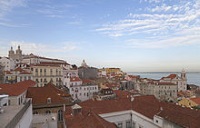
The oldest part of Lisbon, the Alfama quarter sprawls down the hillside from below the Castelo de São Jorge. It retains much of the traditional colour and atmosphere from the days when it was the ancient seat of the Saracens. Along the narrow cobblestone alleyways are taverns and street markets, interspersed with close-packed houses still occupied by stevedores, fishmongers and sailors. Lisbon's renowned flea market, the Feira da Ladra, is held in the Campo de Santa Clara at the edge of the Alfama, every Tuesday and Saturday. The Alfama is also full of historic buildings and churches, which are well worth exploring.
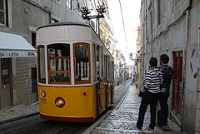
The Bairro Alto district is a historic enclave dating back to 1513, reached via the Santa Justa Elevator from the lower city. The colourful district resounds to the calls of vendors and fishmongers while the windows and balconies are festooned with laundry and bird cages. At night, the area comes alive with some of the finest fado cafés in the city along streets lit by Victorian lanterns. Fado is the famous brand of music and dance brought to Portugal by African slaves in the 19th century. There is no better place in Portugal to experience this musical genre than in the Bairro Alto of Lisbon.

Gulbenkian was an Armenian oil magnate who died in 1955 having put together one of the world's finest private art collections. The collection is now housed in a modern centre where the Calouste Gulbenkian Foundation sponsors a host of cultural and performing arts projects, featuring a rotating exhibition of works by Portuguese and foreign artists. The Gulbenkian collection itself covers Egyptian, Greek and Roman antiquities, Islamic ceramics and textiles, Syrian treasures, Chinese ceramics, Japanese prints and lacquerware, and European medieval illuminated manuscripts. The collection is vast and astounding. Among the paintings are two Rembrandts, a Rubens and a Renoir.
Address : Avenue de Berna 45A
Website : www.museu.gulbenkian.pt
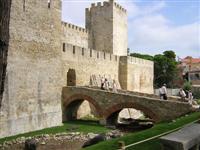
The walls of Castelo de São Jorge sit atop a hill guarding the Tagus, dating from the Moorish occupation in the 10th century. But the site has been a fortress for centuries, possibly from 500 AD. The castle is regarded as the cradle of Lisbon and today it provides a panoramic view of the River Tagus and the Alfama medieval district below. Visitors can walk the esplanades and climb the ramparts while a multimedia show is available during the day which brings alive the history of Lisbon. The castle grounds are planted with olive, pine and cork trees and provide a pleasant spot to relax.
Website : www.castelodesaojorge.pt

Christ the King, known as Cristo Rei, is a Catholic statue and monument dedicated to the Sacred Heart of Jesus Christ. It overlooks the city of Lisbon in the central part of Portugal. The shrine was inspired by the Christ the Redeemer statue in Rio de Janeiro, after the Cardinal Patriarch of Lisbon visited that monument. Like the iconic Christ the Redeemer in Rio, the Cristo Rei spreads its massive arms as if to embrace all of Lisbon. Situated on the bank of the Tejo River opposite the city, the statue is over 328 feet (100m) tall and provides amazing panoramic views of the city from the top.
Address : Alto do Pragal, Av. Cristo Rei, 2800-058 Almada, Portugal
Website : http://www.cristorei.pt
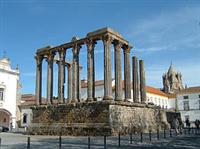
Boasting a remarkably well-preserved Old Town centre, partially bordered by medieval walls, as well as the outstanding Roman Temple (built in the 1st century AD), the gorgeous medieval town of Évora is really something special to behold. Designated a UNESCO World Heritage Site, the town is small, compact, easy-to-navigate and best explored on foot. Visitors will feel immersed in history as they pass by the Aqueduct of Silver Water, the Cathedral of Évora, the Palace of Vasco da Gama and the Renaissance Fountain at Largo das Portas de Moura, built in 1556. The town makes for a perfect cultural day trip from nearby Algarve.
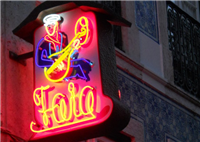
As wonderful as Lisbon's historical area of Alfama is by day, its culture can be even better experienced at night in one of the legendary fado bars of the area. Fado music dates back to the 19th century, characterised by mournful songs about ill-starred sailors. Essential to the music is the emotion of nostalgia and the sensation of loss and its permanent, life-changing consequences. An immensely popular pastime among Portuguese locals, the atmosphere inside any one of the Alfama area's fado bars can be truly magical and tourists to Lisbon are strongly encouraged to join in and become part of the unique, and strangely therapeutic, atmosphere.
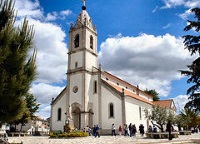
In 1917, the Virgin Mary allegedly appeared above an oak tree and spoke to three peasant children in the valley of Cova da Iria, 79 miles (127km) north of Lisbon. The children claimed to have seen the apparition on five different occasions, and the spot has now become one of the great pilgrimage shrines of the world, known as Fatima. Between May and October, the 13th day of every month is pilgrimage day, when hundreds of the faithful gather in a square twice the size of St Peter's in Rome before the Chapel of the Apparitions. The original oak tree is gone, but has been replaced by a simple white column inside a basilica, which is flanked by statues of the saints.
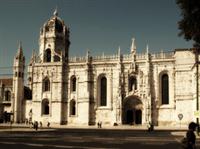
One of Portugal's most iconic tourist sights, the Jerónimos Monastery is an absolute must-see attraction for visitors to Lisbon. A stellar example of Manueline, also known as Portuguese late-Gothic architecture, the Jerónimos Monastery is a UNESCO World Heritage Site, earning its place in the registry on the basis of its architectural splendour that 'exemplifies Portuguese art at its very best'. The Jerónimos Monastery is a beautiful building, resplendent in a gleaming ivory hue with sharp spires, intricate sculptural details and maritime motifs. The cloisters are particularly magnificent, with each column individually carved with coiled rope, sea monsters, coral and other designs that bespeak an era of nautical adventure.
Website : www.mosteirojeronimos.pt/en
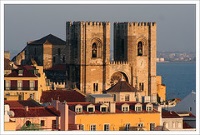
Sé de Lisboa is a Roman Catholic cathedral located in the Alfama district of Lisbon. Since the beginning of its construction in the year 1147, the Lisbon Cathedral, as it is commonly known, has been modified several times and survived many earthquakes. Nowadays, it is a mix of different architectural styles, including Romanesque, Baroque and Gothic architecture. It was built on the site of a Saracen mosque after the city was captured by the Crusaders in the 12th century. Inside, this ancient church features treasures like the font where St Anthony of Padua was baptised in 1195 and numerous notable relics, images and icons.
Address : Largo da Sé, 1100-585 Lisboa, Portugal
Website : www.patriarcado-lisboa.pt
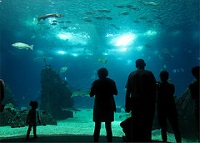
Marketed as the second best aquarium in the world, the world-class Lisbon Oceanarium is the most impressive achievement of EXPO '98, which used to be an abandoned waterfront. The centrepiece of the stone and glass building is the 1.3 million gallon (5 million litre) holding tank. The Oceanarium consists of four distinct ecosystems that replicate the Atlantic, Pacific, Indian, and Antarctic oceans, each featuring the aboveground birds, amphibians and reptiles associated with those waters. Otters splash and dive in the warmer Pacific waters, while penguins shuffle around in their tuxedos in the Antarctic section.
Address : Esplanada d. Carlos I
Website : www.oceanario.pt

One of the most famous sights in Lisbon is the imposing Padrão dos Descobrimentos, situated on the riverbank along Avenida de Brasilia in the district of Belém. Designed to commemorate the Portuguese Age of Discovery, Belém, where the Tagus meets the sea, is the point from which the maritime explorers of yore set forth in their sailing ships to discover the world. The monument was unveiled in 1960 on the 500th anniversary of the death of Prince Henry the Navigator in 1460. The massive monument takes the form of a caravel with Prince Henry at the prow, backed by images of renowned mariners, royal patrons and others who participated in the golden Age of Discovery.
Address : Av. Brasília, 1400-038 Lisboa, Portugal
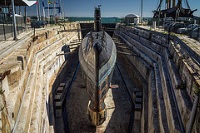
The Navy Museum (Museu de Marinha) of Lisbon is dedicated to all aspects of the history of navigation in Portugal. It occupies a part of the neo-Manueline Western wing of the Jeronimos Monastery, together with the National Museum of Archaeology. With such maritime icons as Vasco de Gama and Bartolomeu Dias, it's no wonder that Portugal's Maritime Museum is one of the best in Europe. It evokes a sense of what it was like when the conquering Portuguese dominated the high seas. Visitors can marvel at the hundreds of models of 15th- to 19th-century sailing ships, merchant marine vessels, fishing boats and pleasure boats as well as a full range of Portuguese naval uniforms.
Address : Praça do Império, 1400-206 Lisboa, Portugal
Website : www.museu.marinha.pt
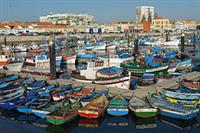
Setúbal, one of Portugal's oldest cities, is renowned for producing the most delicious muscadel wine in the world. Setúbal is also the capital of Portugal's sardine industry and has been a fish-salting centre since the 1st century. White mounds of sea salt drying in the sun are a familiar part of the local landscape. The city sits nearby the Nature Park of Arrábida. The park offers unspoilt nature and beautiful beaches. Lucky visitors may even be able to spot the dolphin colony, which inhabits the Sado River.
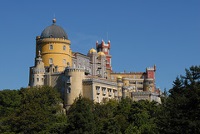
Sintra is steeped in history and offers some of the most exquisite natural and architectural sites in the country. Verdant hills and pastureland wend their way northwest from Lisbon, out of the Tagus estuary and up towards Sintra. The resort town enjoys a picturesque location, nestled in the rolling hills and peaks of the Sintra mountain range. Here, at the northern-most extent of the protected Sintra-Cascais Natural Park, history, archaeology, architecture and natural beauty combine to create a compelling and enduring centrepiece that has enjoyed centuries of popularity. Lisbon and Sintra are connected by a reliable and inexpensive train service.
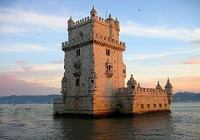
Belém Tower, also known as the Tower of Saint Vincent, is a fortified tower located in the civil parish of Santa Maria de Belem. The tower was built in the 16th century to serve as a fortress in the middle of the River Tagus. It is a UNESCO World Heritage Site, along with the nearby Jeronimos Monastery. The famous Belém Tower is one of Lisbon's most photographed landmarks. The outer walls are adorned with beautiful openwork balconies and a stone-carved rope, along with Moorish watchtowers and battlements shaped like shields. Visitors to the site should make sure to get a guided tour to learn the rich history of the beautiful structure.
Address : Avenida de Brasilia
Website : www.torrebelem.pt
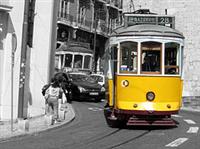
These yellow trams, with their polished wooden floors and vintage quality, might be loud and bumpy, having been in operation since 1901, but they also wend through the most historic and most interesting areas of the Portuguese capital city. The ride travels through Graça, Alfama, Baixa, Chiado, and Bairro Alto, where the largest concentration of great sights in Lisbon can be found. The hop-on, hop-off service is a wonderful way for visitors to get their bearings in Lisbon, and the ideal way to get to know the historic city centre. Tram tickets are sold in kiosks all over Lisbon. A 24-hour pass allows visitors to explore the city with maximum flexibility.
Website : www.carris.pt

Travel Guide powered by Word Travels, copyright © 2023 Globe Media Ltd. By its very nature information in this travel guide is subject to change at short notice and travellers are urged to verify information on which they're relying with the relevant authorities. Neither Globe Media Ltd nor Travel Vogue can accept any responsibility for any loss or inconvenience to any person as a result of information contained above.